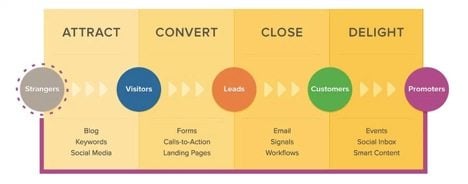Being a startup founder is a very tough but rewarding experience. I was fortunate early on in college at UNCG to have a mentor who successfully closed multiple investment rounds from two tech startup ventures and had one acquired. After selling the first startup, he was able to quickly gain funding with no business plan simply because of the relationships he had nurtured and his reputation as someone who knew what they were doing. This was before the tech bubble. I assure you it’s a lot harder to get money now without sharing some analytical data.
In a world where digital marketing is the new norm, every entrepreneur should develop his or her online personal branding to stand out from the crowd. The Internet has diminished the costs required to develop your platform to be heard, and some of the benefits include:
- A platform where you can launch any idea or company from
- Deep trust from investors due to your transparency
- Increased retention of both your customers and employees
- Opportunities to write for major publications
- Offers for paid speaking engagements
- Regarded as an authority figure that humanizes your startup brand
In a world that’s always trying to get your attention, you must be phenomenal or be forgotten. The only difference between you and “successful” startup founders with personal brands is that they acted.
Here are four actionable strategies to help you build your brand.
Related: 4 Ways Millennials Can Build Personal Brands
Create a platform
It’s critical to have a platform where people can find you. Social media is an excellent way to communicate with others, but I would never advise you to build a platform solely on social media. Nicholas Carr coined a term called digital sharecropping, which essentially means that social media platforms are mostly borrowed resources, and the rules (or algorithms) are always changing. Unlike social media, you can control all of the aspects associated with developing your website.
If you are trying to build a personal brand, I recommend developing a website, then directing customers to that website with the ultimate goal of getting those people to subscribe to an email list. Consider building your site on WordPress and having all the technical nuisances done by WP Curve.
Blog time line hack
Neil Patel and Groove HQ both increased their authority (and website traffic) using a blog time line hack where they created an interesting personal challenge, created a time line and shared transparent insights monthly. Using this method, Neil grew his website traffic more than 100,000 website visitors per month within one year. In your own business, consider what personal challenge you can address that others would admire following along on your journey.
Develop strategic partnerships
After creating a platform and inbound marketing strategy, you will find yourself asking the coveted question: “how do I develop relationships with other influential people when I’m just beginning?” This can be done through two steps:
- Identify influencers: I recommend researching blogger outreach tools to find a tool suitable for your needs
- Nurturing relationships: This can also be done through most blogger outreach tools, or you can choose to use a customer relationship management tool (CRM)
Related: Sign up to receive the StartupNation newsletter!
Build an inbound marketing strategy
After creating your platform, it’s now time to develop a comprehensive inbound marketing strategy to begin attracting targeted people to engage with your brand.
Inbound marketing is defined as the process of attracting strangers and turning them into people who promote your brand. This is done through the strategic creation and distribution of content on your website, blog and social media.
Here are some things you should consider when doing inbound marketing:
- Who do I want to influence?
- Where are they spending their time online?
- How can I add value to their lives?
Now, take the time to plan some SMART goals and implement some of the strategies I mentioned above. Also, please share some of the strategies you have used to successfully grow your personal brand in the comments section below.
Originally published Feb. 13, 2017.







